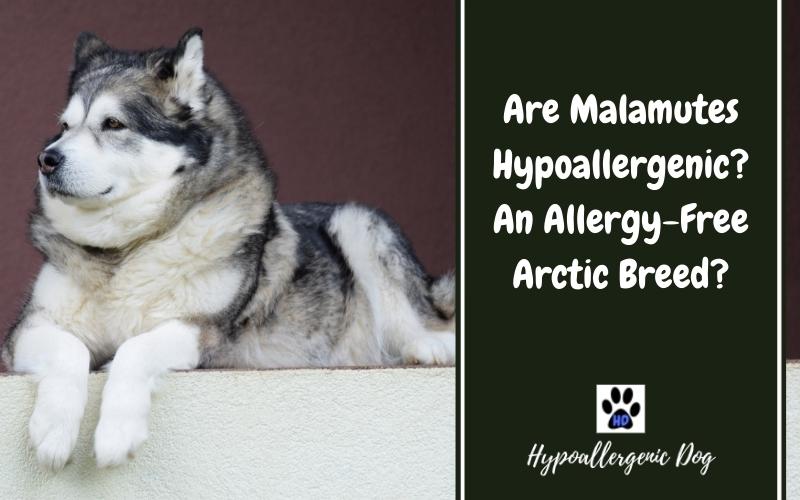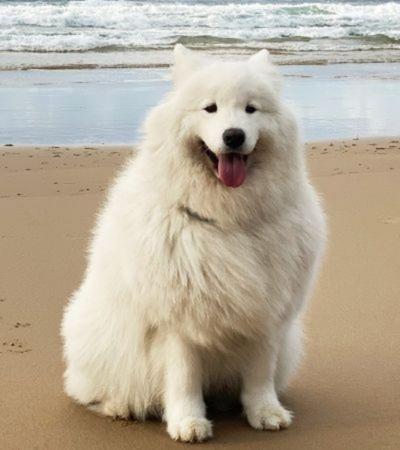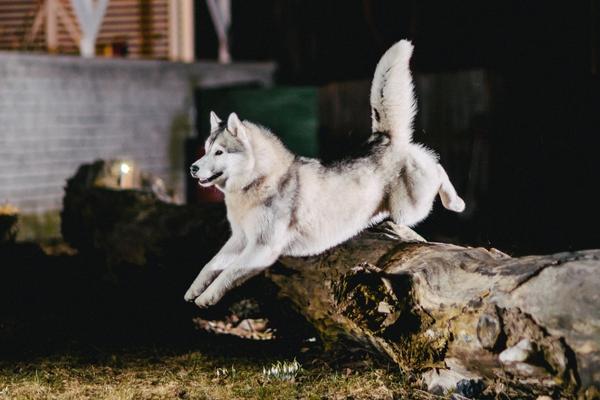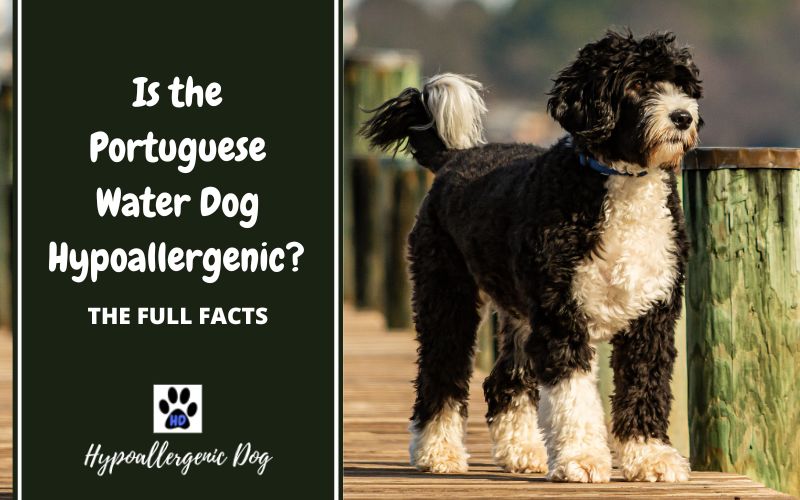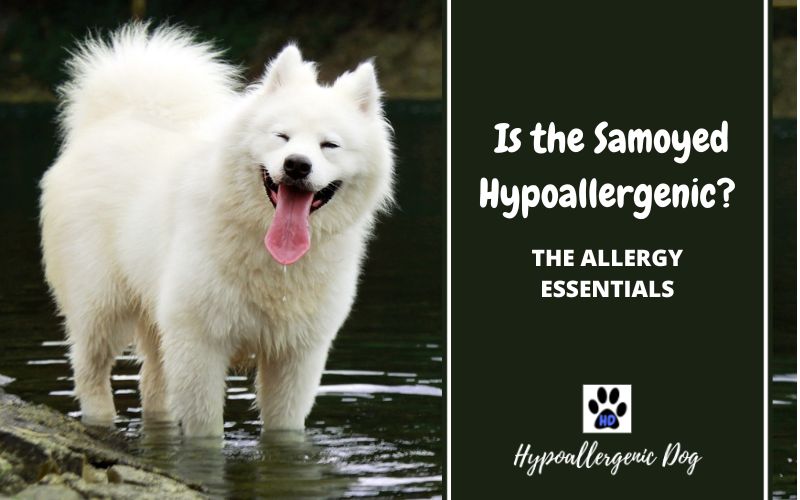Are Malamutes Hypoallergenic?
Are Malamutes hypoallergenic dogs? Unfortunately, for anyone looking for a large, allergy-friendly dog, the answer is no. Malamutes have a thick double coat and are known to be one of the worst breeds for heavy shedding.
Malamute Quick Facts
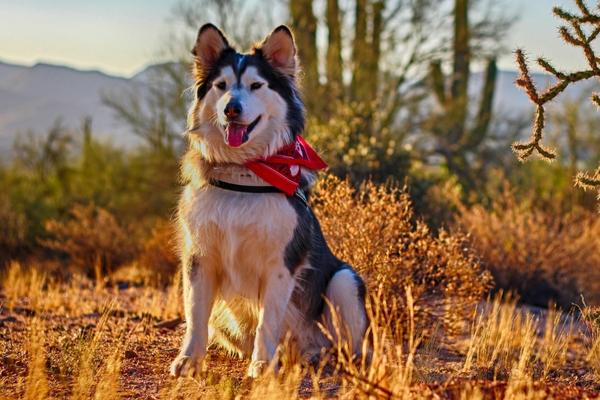
Are Any Dogs 100% Allergy-Friendly? — The Myth of the Hypoallergenic Dog
For people with dog allergies, finding a hypoallergenic breed is the only way they can live allergy-symptom free with a canine companion. However, are any dogs 100% hypoallergenic?
The truth is, there is no such thing. All dog breeds will shed dander — dead skin cells — and this contains the allergen-offending protein. Many people think dog fur is the problem, but allergies are caused by components of dead skin cells, saliva, and urine.
Hypoallergenic dogs are those that shed very little and don’t drool much. These breeds will not release enough of the protein allergen to trigger a reaction.
If you want a more in-depth explanation, you can learn more in our article — What is a Hypoallergenic Dog?
The Malamute’s Coat
One of the most striking parts of a Malamute’s appearance is their beautiful, thick double coat.
The two layers can be described as follows:
- Thick outer coat made up of coarse hair.
- Wooly and oily soft undercoat.
The Malamute’s dual-layered coat is super dense and makes them lovely snuggle buddies!
While it may be impressive to look at and soft to cuddle, this thick coat has a very important job. As working dogs, this breed used to pull sleds in the harsh, Arctic conditions of Alaska. Their weather-proof coat allows them to withstand cold temperatures for long periods of time.
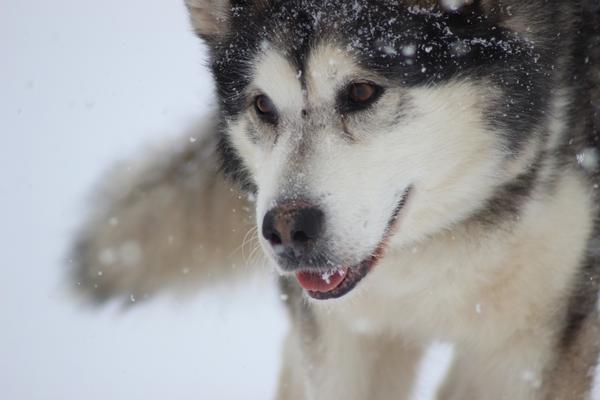
Do Malamutes shed a lot? Yes, they do! In fact, Malamutes are known to be one of the worst dog breeds for shedding.
Malamutes are heavy shedders all year round, losing fur from their double coat regularly. However, the biggest problem is the seasonal coat blowouts.
As your Malamute prepares for the change in seasons, they will shed extremely heavily, losing their old coat and growing a new one. During this time, your Malamute’s shedding will change, they will lose huge clumps of fur at a time. Hence, it will feel like your home has been taken over by fluff!
There is no way you can completely stop your Malamute from shedding. After all, hair loss is a natural part of the Malamute’s physiology, and there’s nothing you can do to stop this process.
However, it is possible to manage it and reduce the amount of fur inside your home.
1. Establish a Brushing Routine
To keep shedding under control, you will need to brush your Malamute regularly. This breed can be quite high maintenance. You should aim to brush daily with both a metal dog comb and a pin brush for around 20 minutes per session. Bear in mind, you will have to increase this during seasonal shedding.
During blowouts, use an undercoat rake. This tool will remove dead hair and catch shedding at the source before the hair has a chance to fall out and settle in your home.
A slicker brush will suffice for their top coat. This will help to remove any more loose fur from the overcoat and will also remove any tangles or knots.
2. Bathe With an All-Natural Dog Shampoo
Malamutes aren’t smelly dogs, and don’t need to be bathed regularly — around every six to eight weeks is adequate.
Bathing your dog too much can disrupt the natural oils on their skin, and this can make shedding worse. The oils work to hydrate and strengthen the hair follicles. In short, stronger roots mean less shedding.
All-natural dog shampoo isn’t harsh so won’t dry out your Malamute’s skin and worsen shedding. If their coat is looking a little lackluster, it’s worthwhile using a conditioner for a moisture boost.
3. Feed Your Malamute a Healthy Diet
Many pet parents don’t realize that the food they feed their pooch can directly impact the amount of fur in their home.
Looking after your Malamute’s coat starts from within. Malamutes need a diet rich in protein and fat and low in carbohydrates. This macronutrient breakdown is best for your dog, ensuring they have a healthy digestive system that absorbs as many vitamins and minerals as possible.
Foods containing salmon are very beneficial for your Malamute’s coats. This fatty fish is rich in omega-3s — known to help dogs maintain healthy skin and fur.
Premium kibble may not be the cheapest option, but it is the best choice if you are trying to minimize your dog’s shedding. Better quality dog food is also the superior option for your dog’s overall health and nutrition.
4. Don’t Shave Your Malamute
You may think that shaving seems a logical step to solve your shedding woes, but the opposite is true.
When you shave a Malamute, their double coat will not grow back as it naturally should. The two layers will not grow in sync, and the fur can become even thicker when it grows back.
Your Malamute’s double coat can become matted and damaged forever. Plus, this breed, like others, relies on their coat to regulate body temperature. Hence, damage through shaving can stop this natural process from happening.
It may be tempting to reach for the clippers or scissors, but removing your canine’s coat is likely to lead to skin conditions and even more shedding.
The Samoyed is also a working dog, bred to tow sleds through the cold Siberian climate. Intelligent and friendly dogs, Sammies will make excellent companions if you enjoy long walks in the great outdoors.
Samoyeds have an affectionate and gentle nature but also love to play and socialize with other animals and humans. This breed is known to make excellent family dogs and is loyal to their pack leader — which, by the way, needs to be you.
Like the Malamute, Sammies have a double coat and shed heavily. Plus, they experience large shedding spells twice a year, losing large clumps of fur, the same as the Malamute.
However, surprisingly Samoyeds are considered to be hypoallergenic. While they shed a lot of fur, they don’t release much dander, which earns them allergy-friendly status.
The Portuguese Water Dog may not have the wolf-like appearance of the Malamute. But it is a large and fluffy dog that’s both affectionate and high energy — needing a minimum of 40 to 60 minutes of exercise per day.
Porties love to swim — these intelligent dogs were bred to work with fishermen. Hence, they’re naturally drawn to water, and with an eagerness to please, this breed is very easy to train.
These dogs may not look as majestic as the Malamute, but they’re adorable in their own way. Portuguese Water Dogs have a long coat made up of tight curls or waves. The great news for people with allergies is that the Portie is a very mild shedder.
Like the Malamute, the Portuguese Water Dog is loyal and loving, and prefers a more active and outdoorsy lifestyle.
3. Native American Indian Dog
The Native American Indian Dog (NAID) has more of a wild dog or wolf look, similar to the Malamute. These dogs are classed as a large breed, weighing up to 120 pounds, and they have a gentle yet sociable nature.
A muscular breed, with wolf-like faces, and mesmerizing almond-shaped eyes. These dogs have a double coat and can come in all different colors, ranging from white to black, to silver, and even tortoiseshell.
This breed is highly trainable thanks to their high intelligence and a strong need to please their owners. The NAID is protective and loyal to their family, and they’re an excellent choice for anyone wanting a guard dog.
What’s more, even with a double coat, they only shed heavily once a year — during the spring. This annual coat blowout can be managed with daily brushing, preferably done outside.
Conclusion
Being a dog lover with dog allergies can feel like an impossible situation to be in. However, allergies don’t have to get in the way of your dreams of becoming a pet parent.
To live in harmony with a furry friend, you will need to choose a hypoallergenic breed. If you’ve been wondering, are Malamutes hypoallergenic? We’re sorry to say the answer is no. Malamutes may shed too much to be allergy-friendly, but many hypoallergenic breeds share their active and playful personality.
Can Malamutes Be Hypoallergenic?
No. Malamutes have a dense double coat and shed heavily throughout the year. This breed also blows their coat twice a year. During this period the Malamute will lose large clumps of fur, and your home will be covered in their fluff.
What Are the Different Types of Malamute?
The Alaskan Malamute can be bred with various other dogs to create unique hybrid breeds. Popular Malamute mixes include the Malador (Malamute/Labrador), Alaskan Shepherd (Malamute/German Shepherd), Alusky (Malamute/Husky), and Corgimute (Malamute/Corgi).
What Is the Lifespan of a Malamute?
Malamutes can live for approximately 10-14 years.
Which Is Bigger Malamute or Husky?
The Malamute is larger in both height and weight. Standing up to 23 inches and weighing in the region of 75 pounds. The Husky is 22 inches tall and weighs up to 50 pounds.
Can Malamutes Sleep Outside?
Yes. If you want to reduce the amount of shedding in your home, Malamutes can live outside. Their dense double coat enables them to keep warm in cold temperatures.
Do Malamutes Shed Like Huskies?
Yes, both these breeds shed seasonally where they blow their coat. This means that they are both huge shedders.

